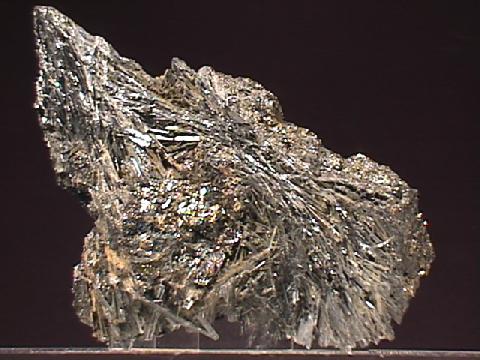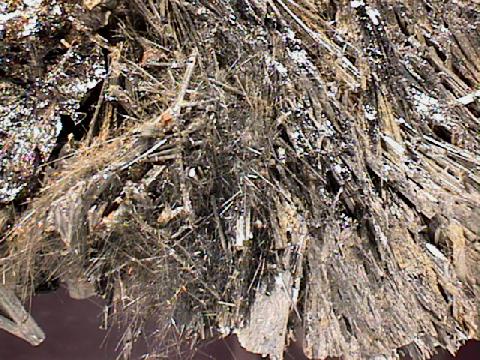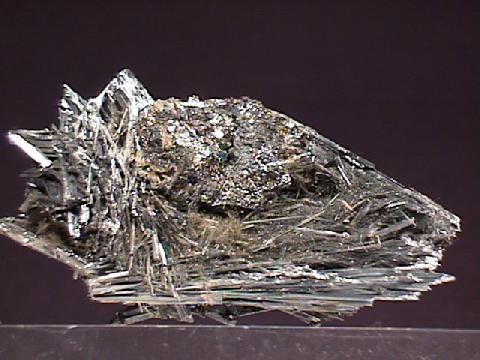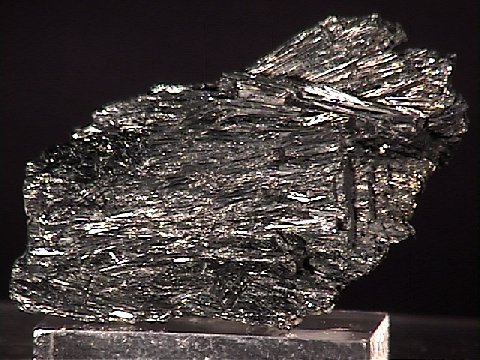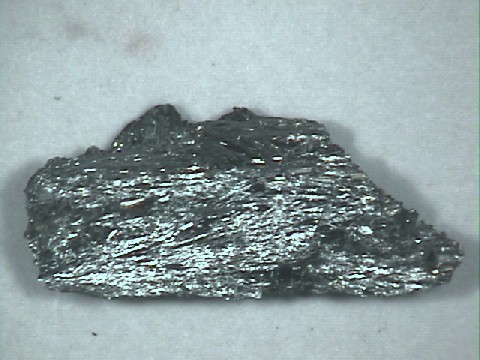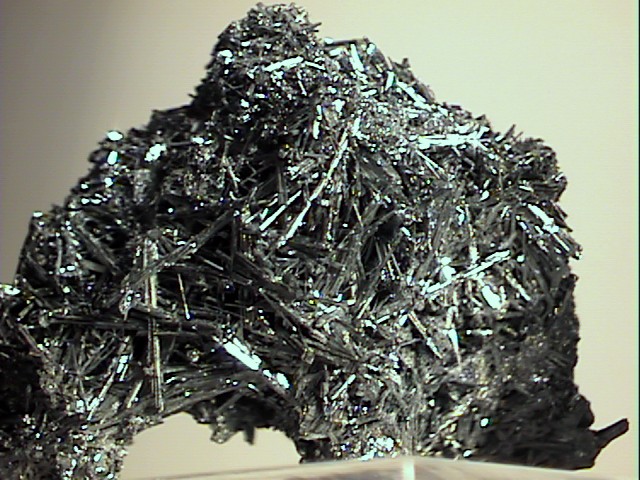 THE
MINERAL ZINKENITE
THE
MINERAL ZINKENITE
- Chemistry: Pb9Sb22S42, Lead Antimony Sulfide
- Class: Sulfides
- Subclass: Sulfosalts
- Uses: Mineral specimens and as a very minor ore of lead.
Specimens
Zinkenite is one of a few sulfide minerals that form fine acicular crystals that appear as hair-like fibers. The fibrous aggregates may be so thick as to cover a specimen with a mat of hair-like fibers or it may be sparsely dessiminated between other minerals and may be confused with stray hairs or dark lint. Jamesonite, boulangerite and millerite are other sulfides that form similar acicular crystals. These sulfides as well as zinkenite have been called "feather ores" because of this unusual habit. Zinkenite is a sulfosalt, a segment of sulfides where the antimony acts more like a metal than a non-metal and occupies a position where it is bonded to sulfurs. A variety of zinkenite from Tasmania contains a small amount of silver.
PHYSICAL CHARACTERISTICS:
- Color is steel gray to gray.
- Luster is metallic.
- Transparency: Crystals are opaque.
- Crystal System: Hexagonal.
- Crystal Habits include dense or sparse felted masses of acicular crystals. Also in fibrous and compact plumose (feathery) masses. Larger crystals show hexagonal prismatic and pyramidal forms.
- Hardness is 3 - 3.5
- Specific Gravity is 5.3 - 5.35 (somewhat heavier than average for metallic minerals)
- Streak is steel gray.
- Other Characteristics: Crystals are brittle.
- Associated Minerals include quartz, calcite, arsenopyrite, jamesonite, boulangerite and other sulfosalts.
- Notable Occurrences include Wolfsberg, Harz, Germany; Dundas, Tasmania, Australia; Silverton, Colorado and Nevada, USA; Bolivia and in British Columbia, Canada.
- Best Field Indicators are crystal habit, associations, color and luster.



